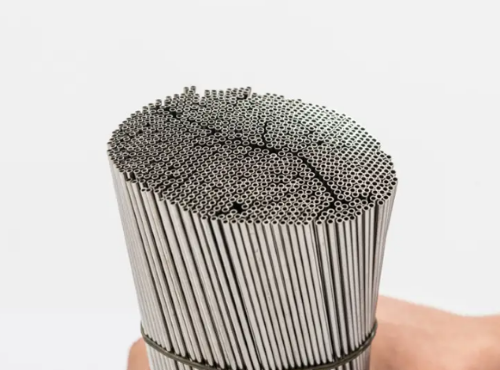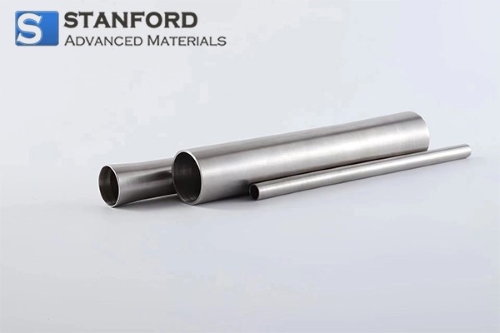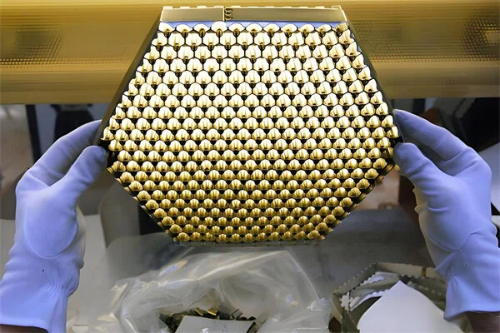Kapillarrohre: Arten und Anwendungen
Kapillarrohre sind kleine, schlanke Rohre mit geringem Innendurchmesser, die in verschiedenen wissenschaftlichen, industriellen und medizinischen Anwendungen eine wichtige Rolle spielen. Sie werden häufig in Bereichen wie Strömungsmechanik, Temperaturmessung, Chromatographie und Kühlung eingesetzt. Im Folgenden werden ihre Arten, Vorteile und vielfältigen Anwendungen untersucht.

Was sind Kapillarrohre?
Kapillarrohre sind dünnwandige Rohre mit einem Innendurchmesser von einigen Mikrometern bis zu einigen Millimetern. Je nach Anwendung werden diese Rohre normalerweise aus Materialien wie Glas, Edelstahl oder Kunststoff hergestellt. Das entscheidende Merkmal ist die Kapillarwirkung, ein Phänomen, bei dem Flüssigkeiten aufgrund der Oberflächenspannung in einem engen Rohr aufsteigen. Dies macht Kapillarrohre nützlich für Anwendungen, die eine Flüssigkeitsbewegung oder die Messung kleiner Flüssigkeitsmengen erfordern.
DieKapillarwirkung entsteht durch die Wechselwirkung zwischen der Flüssigkeit und der Oberfläche des Rohrs. Wenn die Flüssigkeit in den engen Raum gesaugt wird, bleibt sie an den Wänden des Rohrs haften, während die Oberflächenspannung der Flüssigkeit sie gegen die Schwerkraft aufsteigen lässt. Dieser Effekt ist in vielen Geräten und Systemen, die auf den präzisen Fluss von Flüssigkeiten angewiesen sind, von entscheidender Bedeutung. Die folgende Abbildung veranschaulicht die Kapillarwirkung und zeigt, wie eine Flüssigkeit mit einer polaren Oberfläche wie Glas (≡Si-OH) interagiert.
 [1]
[1]
Vorteile und Nutzen
- Präzision in der Flüssigkeitsbewegung: Kapillarrohre sind ideal für Anwendungen, bei denen die Bewegung von Flüssigkeiten genau gesteuert werden muss. Dank ihres kleinen Innendurchmessers können sie Flüssigkeiten in kleinen, präzisen Mengen bewegen.
- Keine externe Energiequelle erforderlich: Einer der größten Vorteile von Kapillarrohren ist, dass sie auf der Grundlage natürlicher physikalischer Kräfte wie Oberflächenspannung und Kapillarwirkung arbeiten. Das heißt, sie benötigen keine externen Energiequellen wie Pumpen oder Motoren, um Flüssigkeiten zu bewegen.
- Geringe Kosten: Diese Röhren sind relativ kostengünstig in der Herstellung, vor allem wenn sie aus Glas gefertigt sind. Ihre niedrigen Kosten machen sie zu einer attraktiven Lösung für viele Industriezweige, in denen Präzision gefragt ist, ohne dass ein komplexer Maschinenpark erforderlich ist.
- Kompakte Bauweise: Aufgrund ihrer geringen Größe sind diese Röhren ideal für Anwendungen, bei denen nur wenig Platz zur Verfügung steht oder nur geringe Flüssigkeitsmengen benötigt werden. Durch ihre Kompaktheit lassen sie sich leicht in kleine Systeme oder Geräte integrieren.
- Vielseitigkeit: Kapillarrohre sind in verschiedenen Materialien wie Glas, Edelstahl und Kunststoff erhältlich und eignen sich daher für den Einsatz in einer Vielzahl von Umgebungen, einschließlich Hochtemperaturen oder korrosiven Umgebungen.
Materialarten von Kapillarrohren
Kapillarrohre gibt es in verschiedenen Materialien, Größen und Ausführungen, die jeweils für bestimmte Anwendungen geeignet sind. Die gebräuchlichsten Typen sind:
1. Glas-Kapillarröhrchen
Glaskapillarröhrchen sind die am häufigsten verwendeten Röhrchentypen und werden in der Regel in Labors verwendet. Sie sind durchsichtig, so dass die darin befindliche Flüssigkeit leicht zu beobachten ist. Glasrohre sind ideal für Anwendungen, bei denen die Sichtbarkeit wichtig ist, wie z. B. bei der Überwachung von Flüssigkeitsbewegungen in Experimenten. Sie sind außerdem chemisch inert und eignen sich daher für eine Vielzahl von chemischen Anwendungen.
Anwendungen: Zur Temperaturmessung, z. B. in Thermometern, und in Laborexperimenten, bei denen das Verhalten von Flüssigkeiten untersucht werden muss.
2. Kapillarrohre aus rostfreiem Stahl
Kapillarrohre aus Edelstahl werden in anspruchsvolleren industriellen Anwendungen eingesetzt, bei denen Haltbarkeit und Korrosionsbeständigkeit entscheidend sind. Diese Rohre sind ideal für Anwendungen mit Hochdrucksystemen oder aggressiven Chemikalien. Aufgrund ihrer mechanischen Festigkeit eignen sie sich für die Handhabung von Flüssigkeiten unter Druck, insbesondere in Systemen, die Präzision erfordern.

Anwendungen: Häufig verwendet in Kühlsystemen, Hydrauliksystemen und medizinischen Geräten.
3. Kunststoff-Kapillarrohre
Kapillarrohre aus Kunststoff, die aus Materialien wie Polycarbonat oder Teflon hergestellt werden, sind leicht und chemikalienbeständig. Sie sind flexibel und können in verschiedene Formen gegossen werden, was sie für unterschiedliche Anwendungen anpassungsfähig macht. Kunststoffrohre werden häufig bei weniger anspruchsvollen Anwendungen eingesetzt, bei denen Kosten und Gewicht eine wichtige Rolle spielen.
Anwendungen: In Konsumgütern, medizinischen Geräten und verschiedenen Flüssigkeitsmanagementsystemen.
4. Bimetallische Kapillarrohre
Bimetallische Kapillarrohre bestehen aus zwei verschiedenen Metallen, die in der Regel miteinander verbunden sind. Diese Rohre werden vor allem in der Temperatursensorik eingesetzt, da sich die beiden Metalle unterschiedlich schnell ausdehnen und so als temperatursensitiver Schalter fungieren können.
Anwendungen: Weit verbreitet in Thermostaten und Kältesystemen zur Temperaturregulierung.
Anwendungen von Kapillarrohren
Kapillarrohre werden in einer Vielzahl von Branchen eingesetzt, von der wissenschaftlichen Forschung bis hin zu industriellen Verfahren. Hier sind einige ihrer bemerkenswertesten Anwendungen:
1. Kältesysteme
In der Kältetechnik sind sie ein wesentlicher Bestandteil des Expansionsventilsystems. Die Kapillare steuert den Fluss des Kältemittels von der Hochdruckseite zur Niederdruckseite des Systems. Der Druck des Kältemittels wird beim Durchströmen des engen Rohrs verringert, wodurch es sich ausdehnt und abkühlt, was zu einem Kühleffekt führt. Diese Anwendung ist in Klimaanlagen und Kühlaggregaten üblich.
2. Thermometer
Sie werden in Flüssigkeits-Glas-Thermometern verwendet, bei denen das Kapillarrohr eine Flüssigkeit (in der Regel Quecksilber oder Alkohol) enthält, die sich bei Temperaturänderungen ausdehnt oder zusammenzieht. Wenn die Temperatur steigt, bewegt sich die Flüssigkeit in der Röhre nach oben und ermöglicht so präzise Temperaturmessungen. Kapillarröhrchen ermöglichen genaue Messungen auch bei sehr kleinen Temperaturänderungen.
3. Chromatographie
In der Chromatographie werden Kapillarröhrchen bei der Dünnschichtchromatographie (TLC) oder der Gaschromatographie (GC) verwendet. Diese Röhrchen ermöglichen die präzise Trennung von Substanzen, indem sie die Kapillarwirkung nutzen, um Lösungsmittel durch eine stationäre Phase zu bewegen. Diese Technik wird häufig in der chemischen Analyse eingesetzt, um verschiedene Bestandteile einer Probe zu identifizieren und zu quantifizieren.
4. Flüssigkeitsstrom-Studien
Kapillarröhrchen werden häufig in Labors verwendet, um das Verhalten von Flüssigkeiten unter kontrollierten Bedingungen zu untersuchen. Indem sie messen, wie weit eine Flüssigkeit in einem Kapillarrohr aufsteigt, können Forscher wichtige Eigenschaften wie Oberflächenspannung und Viskosität bestimmen. Diese Untersuchungen sind in Bereichen wie Physik, Chemie und Biologie von grundlegender Bedeutung.
5. Medizinische Geräte
In medizinischen Anwendungen werden sie in Geräten wie Blutentnahmeröhrchen und Kapillarblutentnahmegeräten verwendet. Ihre geringe Größe ermöglicht die Entnahme sehr kleiner Mengen von Blut oder anderen Körperflüssigkeiten, was für diagnostische Tests entscheidend ist. Kapillarröhrchen werden auch in bestimmten Arten von medizinischen Thermometern verwendet.
6. Hydraulische Systeme
Kapillarrohre aus rostfreiem Stahl werden in hydraulischen Systemen verwendet, wo sie zur Steuerung des Flüssigkeitsstroms in Hochdruckumgebungen beitragen. Diese Rohre sind von entscheidender Bedeutung für die Regulierung des Durchflusses von Öl oder anderen Flüssigkeiten in Maschinen und gewährleisten einen reibungslosen und effizienten Betrieb.
7. Dochtwirkung und Flüssigkeitsbewegung
Kapillarrohre werden auch in Dochtanwendungen eingesetzt, wo sie die Bewegung von Flüssigkeiten über Oberflächen unterstützen. Dies ist besonders nützlich bei der Absorption von Flüssigkeiten in bestimmten industriellen Prozessen oder bei der Konstruktion von Geräten wie Tintenschreibern, bei denen die Kapillarwirkung dazu beiträgt, Tinte zur Schreibspitze zu ziehen.
Fazit
Kapillarrohre können die Bewegung von Flüssigkeiten ohne externe Energiezufuhr präzise steuern, was sie in Kühlsystemen, bei Temperaturmessungen, in der Chromatographie und in medizinischen Geräten von unschätzbarem Wert macht.
Stanford Advanced Materials (SAM) ist in der Lage, Kapillarrohre mit hoher Reinheit und zu wettbewerbsfähigen Preisen zu liefern, einschließlich Edelstahl, Nickelbasislegierungen und Edelmetallen. Ob für industrielle, wissenschaftliche oder medizinische Zwecke, die Kapillarrohre von SAM sind so konzipiert, dass sie die spezifischen Anforderungen jedes Kunden erfüllen.
Referenz:
[1] Kapillarwirkung. (2024, 30. Dezember). In Wikipedia. https://en.wikipedia.org/wiki/Capillary_action#

 Bars
Bars
 Beads & Spheres
Beads & Spheres
 Bolts & Nuts
Bolts & Nuts
 Crucibles
Crucibles
 Discs
Discs
 Fibers & Fabrics
Fibers & Fabrics
 Films
Films
 Flake
Flake
 Foams
Foams
 Foil
Foil
 Granules
Granules
 Honeycombs
Honeycombs
 Ink
Ink
 Laminate
Laminate
 Lumps
Lumps
 Meshes
Meshes
 Metallised Film
Metallised Film
 Plate
Plate
 Powders
Powders
 Rod
Rod
 Sheets
Sheets
 Single Crystals
Single Crystals
 Sputtering Target
Sputtering Target
 Tubes
Tubes
 Washer
Washer
 Wires
Wires
 Converters & Calculators
Converters & Calculators
 Write for Us
Write for Us
 Chin Trento
Chin Trento



